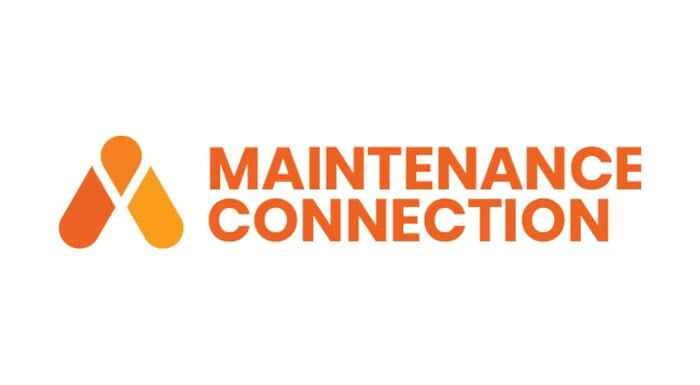
Maintenance Connection Leading in G2 Winter 2021 Report
Why Maintenance Connection CMMS and EAM system received eight awards in G2's 2021 Winter Grid Reports.
Solutions
Workplace Management Solutions
Real Estate Management Solutions
Maintenance Management Solutions
Energy Management Solutions
Engineering Document Management Solutions
Asset Management Solutions
Automate campus scheduling for classes, meetings, and exams with our EMS software.
Plan and manage conferences effortlessly with EMS software to impress guests and streamline operations.
Boost workplace flexibility and maximize space use with seamless desk and room booking.
Organize workplace or campus events smoothly, creating memorable experiences.
Optimize workspace, manage allocations efficiently, and reduce costs with our space management solutions.
Deliver projects on time and within budget by improving communication, collaboration, and efficiency with our software.
Streamline lease accounting for ASC 842, IFRS, and GASB compliance.
Manage leases efficiently by tracking key dates, analyzing costs, and ensuring compliance.
Centralize data and analytics for better insights, faster negotiations, and revenue growth.
Centralize facility and asset maintenance, automate work orders, and ensure compliance with our CMMS software.
Extend asset life, reduce downtime, and prevent costly repairs with data-driven monitoring.
Prevent equipment failures and extend asset life by detecting and addressing issues early.
Make sustainable, cost-efficient energy decisions by monitoring and optimizing power consumption.
Remotely monitor and control equipment with real-time data to predict issues, boost efficiency, and reduce downtime.
Easily share and collaborate on documents, creating a single source of truth for engineers and contractors.
Manage and analyze assets across their lifecycle to schedule maintenance, reduce downtime, and extend lifespan.
Improve visibility, automate work orders, and ensure compliance for efficient facility and asset management.
Resources
Browse our full library of resources all in one place, including webinars, whitepapers, podcast episodes, and more.
Support
Looking for access to technical support, best practices, helpful videos, or training tools? You’ve come to the right place.
About Accruent
Get the latest information on Accruent, our solutions, events, and the company at large.

Learn how to successfully implement an alternative equipment maintenance system with the help of the right computerized maintenance management system (CMMS).
Table of contents
By: Rick Joslin, Senior Advisor, Healthcare Strategy
AEM programs can be key to improving your operations and increasing the usability, useful life, and resource utilization of your structures, systems and assets (SSA’s). That said, successful implementation of an AEM program is often easier said than done. The right CMMS system can help.
The term AEM— whether you take it to mean, “Alternate equipment management” (CMS) or “alternative equipment maintenance” (TJC) — involves the alteration of manufacturer maintenance requirements to gain advantages in usability, useful life, resource utilization, or support on your structures, systems, and assets (SSA’s). In other words, it helps you modify your maintenance plans to optimize your SSA’s.
What’s more, although it’s not a primary reason for implementing an AEM, a successful AEM program will also use lean methodologies to help users identify activities that can be adjusted to maintain or increase safety of the SSA while reducing expenses (usually related to labor, materials or parts).
Unfortunately, implementing an effective AEM program is often easier said than done. In their 2011 publication Clarification of Hospital Equipment Maintenance Requirements (S&C: 12-07-Hospital), CMS provided more guidance on this topic, and AAMI published the AEM Program Guide with recommendations on establishing and maintaining an AEM program. Even with all this guidance, this topic is often, as many might say, “as clear as mud.”
Why? Remember, an AEM is meant to help modify a manufactures service requirements— usually a Preventive/Planned Maintenance check or service. It is not a plan to reduce or eliminate failures or breakdowns (that’s another conversation). To get it right, then, considerable time must be spent analyzing service history on the SSA under review, and specific attention must be placed on those service events that could have been prevented (or caused) by an alteration of what the manufacturer has defined.
This kind of legwork is difficult to get right, especially if you don’t have the right tools in place.
The right CMMS, such as Accruent’s TMS, can be used to record many of the documentation requirements for an AEM program. Here, we'll focus on a few key data values that make a compliant AEM possible while also ensuring your SSA inventory management needs are met.
To build the data required to develop your AEM plan, your CMMS must be able to record several key data components in at least three areas of the program: work orders, inventory, and schedules. Here are key data values that should be available on each corrective maintenance-type work order:
Within the SSA inventory section, your CMMS should be able to assign values for these attributes on each record:
Next, each SSA should have the original manufacturers' requirements recorded (i.e.: frequency and procedures), ensuring that specific documentation requirement is met. From there, any changes made to these requirements must be recorded as well. The original requirements can be documented in various ways:
Finally, you will also need the analytics used in review and determination of AEM inclusion, including:
A modern CMMS would have the ability to create all these fields and to store and/or access these documents on-demand in support of AEM procedures. If your CMMS can’t do these activities, contact Accruent and see what a modern-day, highly capable CMMS looks like.
Rick Joslin is currently a senior advisor with Accruent, where he has helped healthcare systems navigate the ins and outs of managing maintenance activities within their organizations. Rick has 35+ years in the maintenance management industry, working closely with technicians, inspector/compliance surveyors, and directors. He is known for promoting continuous improvement, driving operational efficiency, increasing resource utilization, and ensuring regulatory success. Rick leverages LEAN thinking and Six Sigma processes to guide customers in short and long-term development. Rick can also deftly identify gaps and inefficiencies in business processes and drive operational excellence. His broad knowledge of healthcare operations and regulatory requirements, coupled with an intimate knowledge of CMMS systems, allow him to assist customers in developing easily implemented solutions to unique, and changing business needs.
Why Maintenance Connection CMMS and EAM system received eight awards in G2's 2021 Winter Grid Reports.
An enterprise asset management (EAM) system can help your organization drive maintenance improvement and increase your ROI. Here's how.
Discover the benefits of location integration with a computerized maintenance management system.
Subscribe to stay up to date with our latest news, resources and best practices.
* To unsubscribe at any time, please use the “Unsubscribe” link included in the footer of our emails.